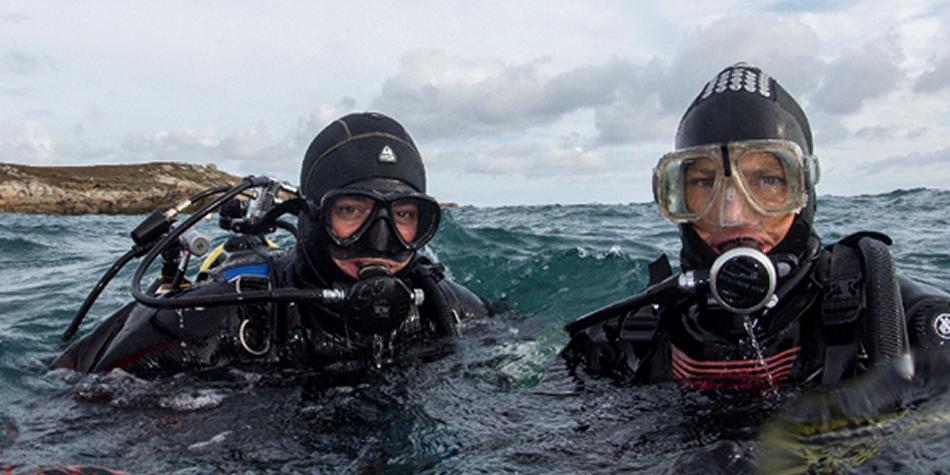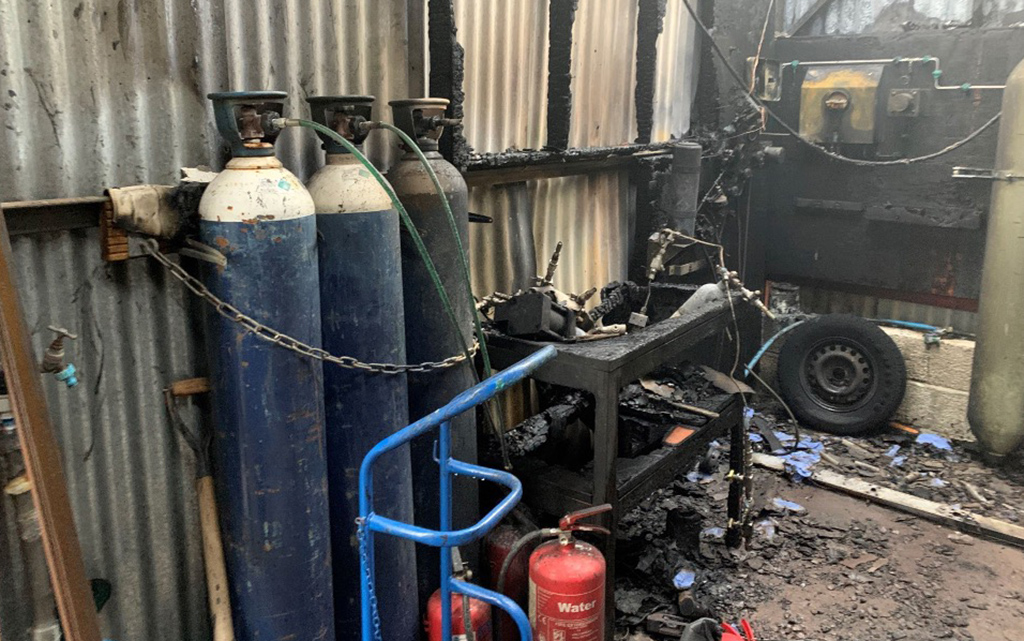
Following an oxygen fire that caused the oxygen booster pump to explode in their club house, one club has proactively taken steps to reflect on the accident and make a positive impact on safety for all club activities and share their learnings with all BSAC clubs and the dive industry as a whole.
The incident resulted in serious injury to one of the club's members and had a significant impact on the club members as a whole, as Sophie Heptonstall, BSAC Head of Diving and Training, explains.
Background
It’s important to note that the compressor and blending panel were well designed, and all equipment was installed and serviced according to manufacturer recommendations by external professionals and a trained and very experienced mixed gas blender was filling cylinders in the gas room and boat storage building, following all the recommended procedures. The building containing the compressor usually also stored the boat and tow vehicle, but this was out on this occasion and there were two cars in the building instead.
Don’t get complacent
Thankfully, as a result of training, equipment design and safety protocols, Oxygen fires are rare. However, when they do occur, they can result in serious injury and damage, so it’s important that divers and operators do not get complacent. With this in mind we need to take a fastidious approach to gas blending and the surrounding environment to minimise risk and promote gas blending safety based.
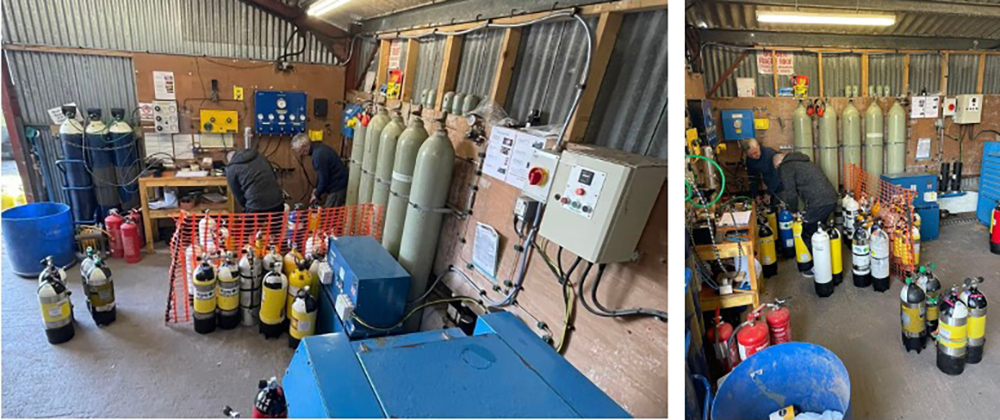
Before the fire
Preventing oxygen fires
Oxygen itself does not burn, but it readily supports combustion, significantly increasing the intensity and speed of fires. When oxygen-enriched environments meet flammable materials, even seemingly innocuous sources of ignition, such as sparks, hot surfaces, using the wrong type of control valve or opening and/or allowing too high a gas flow, can trigger rapid and violent fires. Prevention is the cornerstone of oxygen fire safety. By adhering to established protocols and best practices, divers and operators can minimize the risk of fires and ensure a safe diving environment.
Equipment maintenance
Regular inspection and maintenance of diving equipment, particularly oxygen delivery systems, are essential to detect and address any potential issues that could lead to fires. This includes hoses/whips that are used to deliver O2. Maintenance should also include checking for leaks, ensuring proper fittings, and replacing worn or damaged components.
Regular maintenance and calibration of any blending panel in line with the manufacturers guidelines is essential to ensure its accuracy and reliability. This should include routine checks of valves, gauges, filters, and sensors to detect any signs of wear or malfunction and cleaning of the lines.
It is essential that all such maintenance and inspection is carried out by trained and competent personnel.
Avoiding contamination
Oxygen-rich environments are particularly sensitive to contamination by oil, grease, or other combustible materials. Strict cleanliness protocols must be observed to prevent contamination of equipment and breathing gases. Consider the surrounding environment, handling of O2 equipment and storage of any whips – are they in a clean environment and kept away from contaminated surfaces. Debris could get into the system via overtightened soft-seat valves or via contaminated O-rings, which could then act as a fuel.
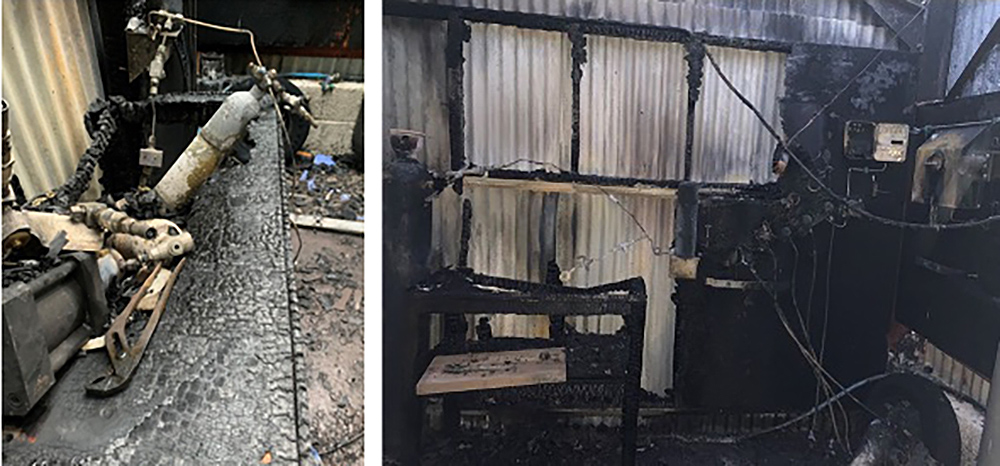
After the fire
Minimise ignition and fuel sources
Review the filling and storage environment, wood and fuel are materials that are likely to further fuel a fire after ignition and escalate the risk. Keeping boats, vehicles and spare fuel away from the filling and storage facilities significantly reduces the risk. Think about any work benches – metal instead of wood is easier to keep clean from contamination and not flammable. Consider fire resistant materials for any wall mounting or notice boards such as concrete board.
As electricity can be an ignition source review the proximity electric switches, sockets and consider the lighting near the gas blending area as there are low voltage sealed lighting options available.
Equipment set-up
Review the filling and blending system as a whole, if a system has had additions over time are there any potential risks? If necessary seek professional advice if you lack the expertise in the branch.
On a blending system where a booster pump is used, ensure the position of the O2 pump in relation to the throttle is in line with manufacturers recommendations, often there is a recommended minimum distance between the two but having them a few metres apart could minimise risk in the event of a fire due to the operator being further away from the pump.
Whilst it is rare for hoses to split, if they do friction heat caused by the escaping gas can be a source of ignition. Steel braided hoses offer a more robust external structure.
Think carefully about the facility layout taking zoning into consideration to segregate the operator from the equipment and any further hazards in the event of an incident to reduce risk of injury.
Opening oxygen valves
If a system is pressurised quickly the adiabatic heat generated can be substantial and if there is contamination present an ignition can occur. Pressurise the system slowly, it is very important to open a valve slightly and then wait, allowing the pressure in the first stage and hoses to build slowly. Allowing time to reach full pressurisation, will greatly reduce the risk of a fire, even if there is a degree of contamination present.
Handling and storage
Oxygen cylinders should be handled with care to prevent damage or leakage. They should be stored in well-ventilated areas away from heat sources, flammable materials, and direct sunlight. Additionally, cylinders should be secured to prevent tipping or falling.
Training and education
Divers and personnel involved in handling oxygen-rich gases must undergo comprehensive training on oxygen safety protocols, including the identification of potential hazards, proper handling techniques, and emergency procedures.
Before operating a mixed gas blending panel, divers must undergo comprehensive training and certification to ensure they understand the intricacies of gas blending, including gas laws, blending techniques, and safety protocols.
It’s advisable to hold refreshers for anyone who is NOT blending gas on a regular basis and also if any changes are made to systems or protocols. Having clearly displayed procedures for use of equipment displayed in view of the blending area is recommended. The use of checklists is especially useful in this respect particularly for those using the facility infrequently.
Notification
Often club houses and filling facilities can be in isolated environments. In the event of a fire if a single person is injured, whilst filling alone, they may not be able to get out of the building or raise the alarm. Conducting a risk assessment of the filling processes and environment will help identify mitigating procedures for example notifications when filling is taking place and safely completed or having 2 people on site, one filling and one outside the building could be considered.
Emergency procedures
Despite diligent prevention efforts, oxygen fires may still occur. In such instances, a prompt and effective response is essential to ensure the safety of individuals involved and minimise damage. It’s worth reviewing your current risk assessments regarding emergency procedures including the ones listed below:
Evacuation
Access and Egress in an emergency is essential. Keep exits open when filling for easy evacuation and ensure that exit route (as well as ensuring ventilation) is clear and free of dive kit/trip hazards.
Fire extinguishers
Have appropriate fire extinguishing agents, such as water, CO2, or dry chemical extinguishers, to suppress the fire. It's crucial to use extinguishing agents compatible with oxygen-enriched environments to avoid exacerbating the situation but only action use if safe to do so.
Summon emergency services
Contact emergency services and provide them with pertinent information, including the location, nature of the incident, and any potential hazards present.
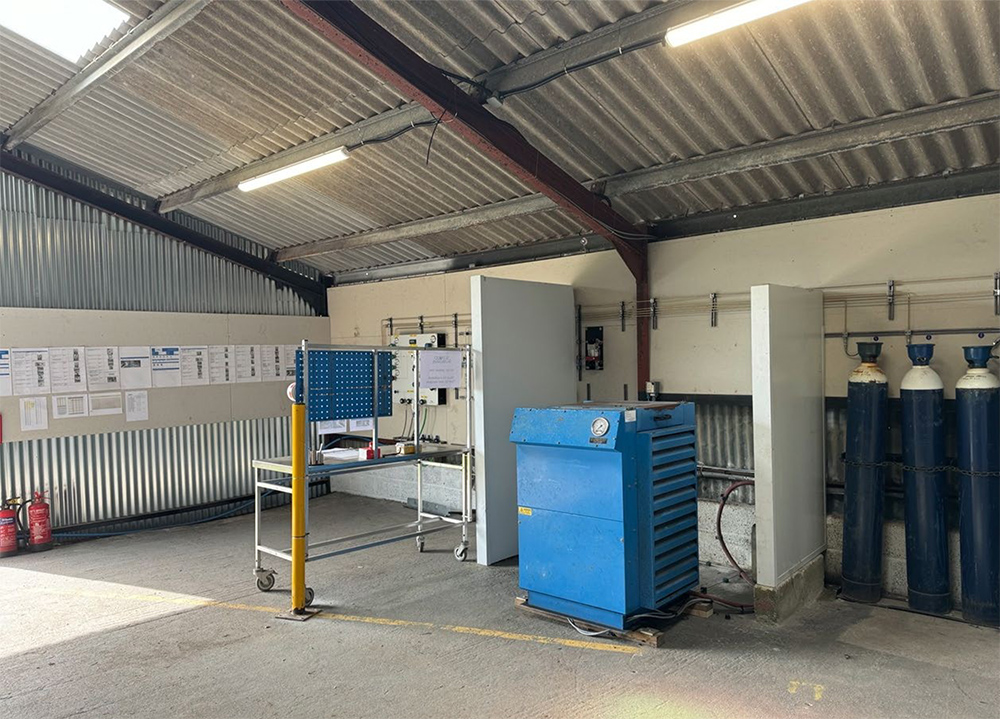
The redesigned and rebuilt filling station
Summary
Oxygen fire safety is a critical consideration to anyone blending mixed gas or with access to facilities storing or blending mixed gas. By reviewing your own facilities and processes and educating your fellow divers and clubs you can develop a deeper understanding of the risks associated with your own activities and develop more robust prevention measures and emergency response protocols to ensure a safe and secure operating environment. Through vigilance, training, and adherence to best practices, we can all contribute to minimising the risks.

 Author: Sophie Heptonstall | Posted 01 Jul 2024
Author: Sophie Heptonstall | Posted 01 Jul 2024



